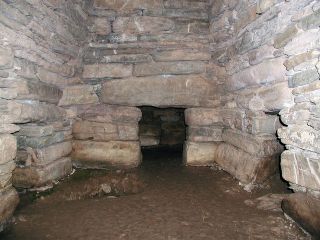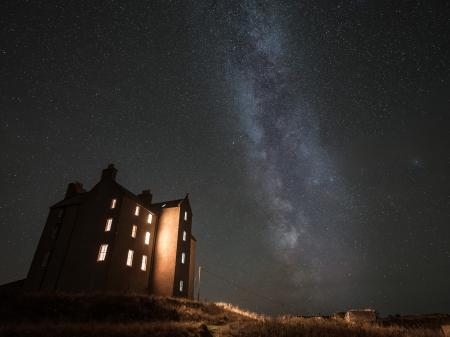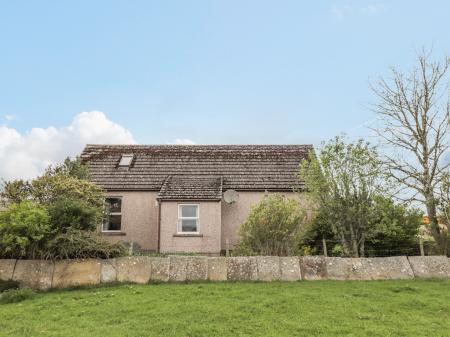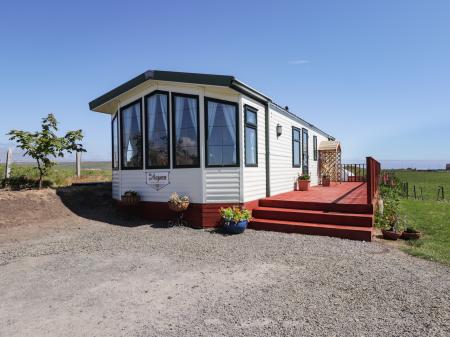
Six cells open off the central chamber. When Victorian antiquarians excavated the site they found bones and skulls in 4 of the cells. A stone cist was set into the floor of the central chamber, and within it were the bones of 10 adults and 4-5 children.
As well as human bones the remains of animal bones, pottery, and tools made of bone and stone were found.
One point that archaeologists have noted is how closely the chambered tomb resembles the stone village at Skara Brae, on Orkney Mainland. Like Skara Brae, there is a passage leading to stone-lined chambers. Perhaps the Neolithic builders wanted their tombs to closely resemble their normal dwellings.
The Elsness peninsula may have been an island in the Neolithic period, separate from the mainland of Sanday. That might explain why it seems to have been set aside as a ceremonial centre, a special place for burials. The site appears to have been used for burials from at least 2900 BC through the 2nd millennium BC.
Quoyness is on the southern tip of Elsness, 2.5 miles from Kettlehoft. To reach Sanday you have to take the ferry from Kirkwall.
 We've 'tagged' this attraction information to help you find related historic attractions and learn more about major time periods mentioned.
We've 'tagged' this attraction information to help you find related historic attractions and learn more about major time periods mentioned.


